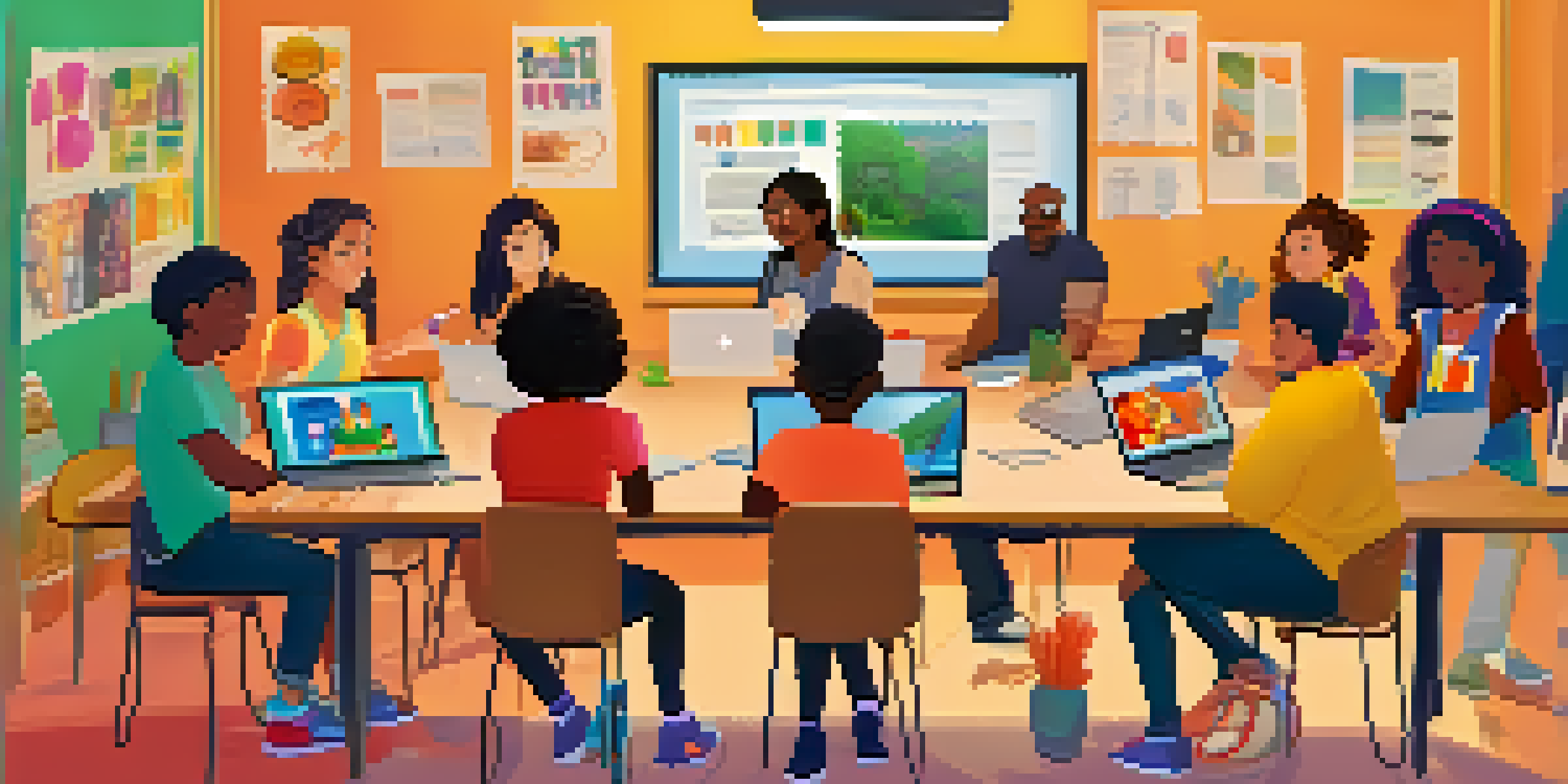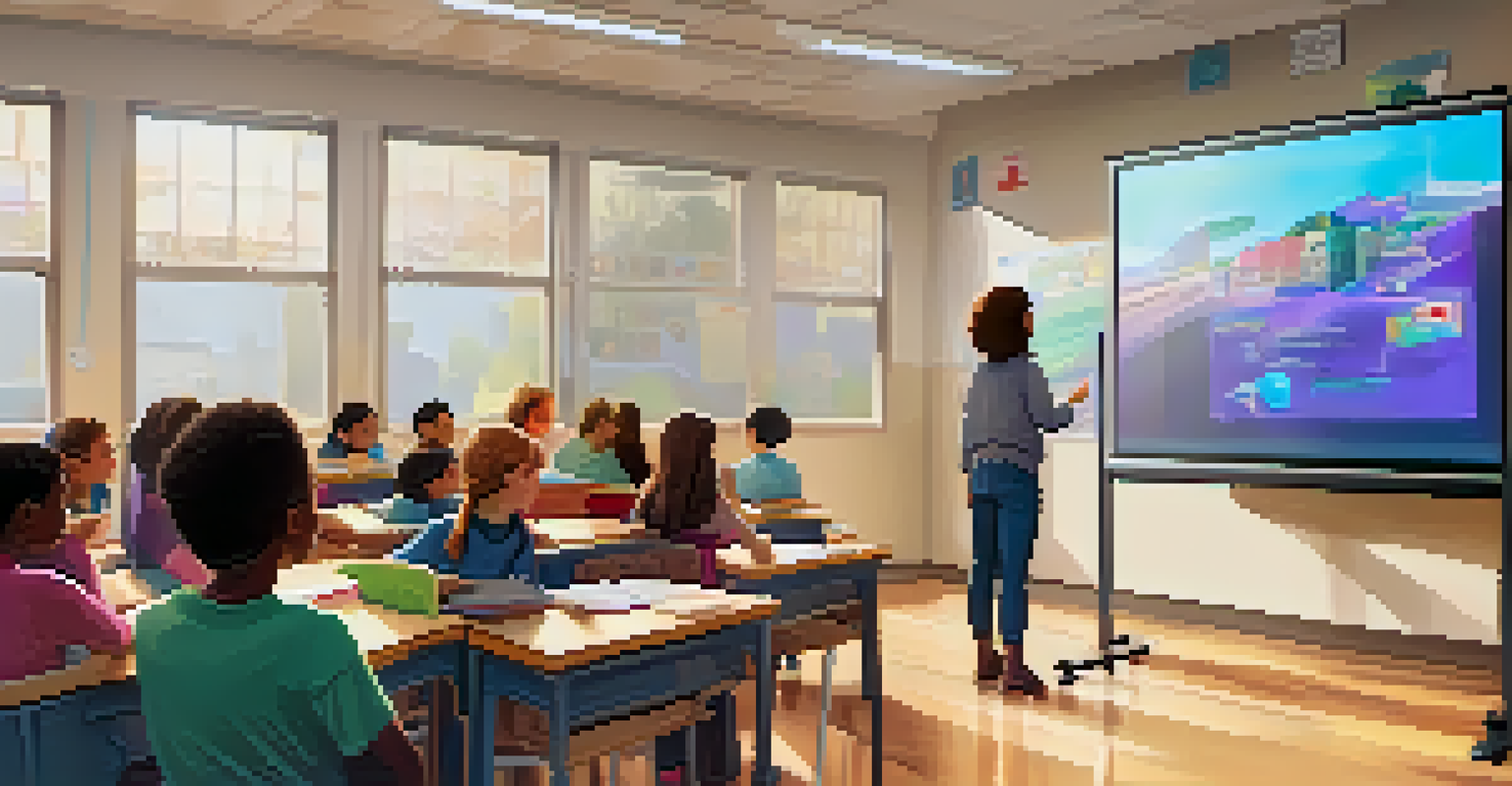Digital Storytelling as a Collaborative Learning Tool

Understanding Digital Storytelling in Education
Digital storytelling combines traditional storytelling with digital media, creating a powerful educational tool. It engages learners by allowing them to express themselves creatively while using technology. This approach fosters a deeper understanding of the content as students craft narratives that resonate with their experiences.
Digital storytelling is a powerful way to engage students and encourage them to express their ideas creatively.
As an educational method, digital storytelling encourages critical thinking and collaboration. Students work together to brainstorm ideas, share resources, and develop a cohesive story. This collaborative process not only strengthens their communication skills but also builds a sense of community in the classroom.
Moreover, digital storytelling caters to various learning styles, making it an inclusive approach. Visual learners benefit from the graphics and videos, while auditory learners thrive on the storytelling aspect. This versatility makes it a valuable addition to any curriculum, meeting the needs of diverse learners.
The Role of Collaboration in Digital Storytelling
Collaboration is at the heart of successful digital storytelling projects. When students come together, they bring unique perspectives and ideas that enrich the final product. This collaborative environment promotes teamwork, as learners must negotiate roles, share responsibilities, and support one another throughout the creative process.

In collaborative settings, students learn to appreciate the strengths of their peers. For instance, one student might excel in writing, while another is skilled in graphic design. By pooling their talents, they create a more polished and engaging story than they could individually, demonstrating the power of collective effort.
Additionally, collaboration fosters social skills that are essential in both academic and real-world contexts. Through discussions and feedback, students develop the ability to communicate effectively, resolve conflicts, and build trust. These skills are invaluable as they prepare for future collaborative endeavors, whether in school or their careers.
Engaging Students Through Multimedia Elements
Incorporating multimedia elements is a game-changer when it comes to digital storytelling. Students can use images, audio, video, and animations to enhance their narratives and keep their audience engaged. This multimedia approach not only captures attention but also helps convey complex ideas more effectively.
Collaboration is the key to success in any learning environment, particularly in projects that require creativity and innovation.
For example, a group project on environmental issues could feature videos of local wildlife, audio clips of interviews with experts, and striking visuals of the ecosystem. By combining these elements, students create a compelling narrative that resonates with their audience and drives home the importance of the topic.
Moreover, multimedia storytelling allows for greater expression and creativity. Students can experiment with different formats and styles, giving them the freedom to explore their interests. This not only makes learning fun but also encourages them to take ownership of their education.
Building Critical Thinking Skills Through Storytelling
Digital storytelling is an excellent platform for developing critical thinking skills in students. As they create their narratives, learners must analyze information, evaluate sources, and make decisions about the best way to present their ideas. This analytical process encourages them to think deeply about the subject matter.
For instance, when tasked with creating a digital story about historical events, students must sift through various sources to determine which facts are most relevant. This requires them to assess credibility and bias, honing their research skills in the process. It’s an exercise that not only enriches their understanding but also prepares them for future academic challenges.
Furthermore, the reflective nature of storytelling prompts students to consider different viewpoints. As they collaborate with peers, they encounter diverse opinions that challenge their thinking. This exposure helps them develop empathy and a broader perspective, essential qualities in our increasingly interconnected world.
Enhancing Communication Skills Through Collaborative Projects
Digital storytelling projects require robust communication skills, as students must articulate their ideas clearly to their peers. Whether discussing story elements or providing feedback, effective communication is essential for collaboration. This practice not only improves their verbal skills but also enhances their ability to listen actively.
As students navigate the collaborative process, they learn to articulate their thoughts and ideas more effectively. This is particularly important in group settings, where differing opinions may arise. By learning to express themselves constructively, they build confidence and strengthen their ability to engage in meaningful discussions.
Moreover, these communication skills extend beyond the classroom. In a world where teamwork is increasingly valued, the ability to convey ideas clearly and listen to others is crucial. Digital storytelling projects provide a safe space for students to practice these skills, preparing them for future academic and professional collaborations.
Fostering Creativity and Innovation in Learning
Digital storytelling allows students to unleash their creativity and explore innovative ideas. With the freedom to choose their formats and content, learners can experiment with various storytelling techniques. This creative exploration not only makes learning enjoyable but also encourages them to think outside the box.
For instance, a project on a literary work could involve creating a modern retelling through a digital medium. Students might choose to create an animated video, a podcast, or an interactive website, applying their skills in imaginative ways. This kind of creative engagement fosters a love for learning and encourages students to take risks in their projects.
Additionally, nurturing creativity in the classroom prepares students for a rapidly changing world. In today's job market, employers seek individuals who can think creatively and find innovative solutions to problems. By integrating digital storytelling into their learning, students cultivate the skills necessary to thrive in future endeavors.
Assessing Learning Outcomes in Digital Storytelling
Assessing student learning in digital storytelling projects can be both effective and engaging. Traditional assessments often fail to capture the depth of understanding students achieve through creative projects. By evaluating their digital stories, educators can gain insights into students' knowledge and skills in a holistic manner.
For instance, rubrics can be designed to assess various aspects of the project, including creativity, collaboration, and content accuracy. This multifaceted approach allows teachers to recognize individual contributions while also considering the group's overall success. It also encourages students to strive for excellence in multiple areas.

Moreover, assessing digital storytelling projects can also include self-reflections and peer evaluations. These elements promote metacognition, encouraging students to think critically about their learning process. As a result, assessments become not just a means to measure performance, but also a valuable tool for personal growth and improvement.